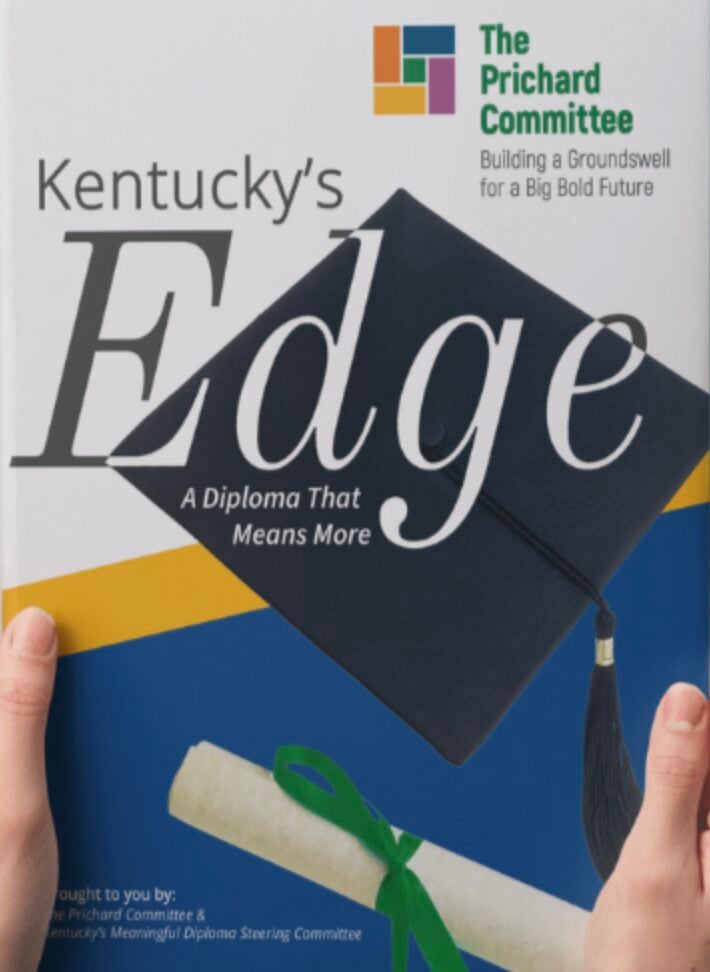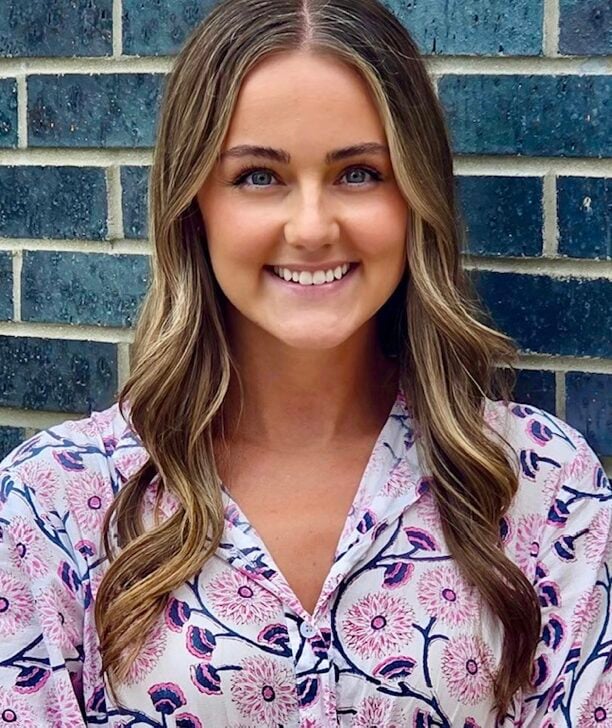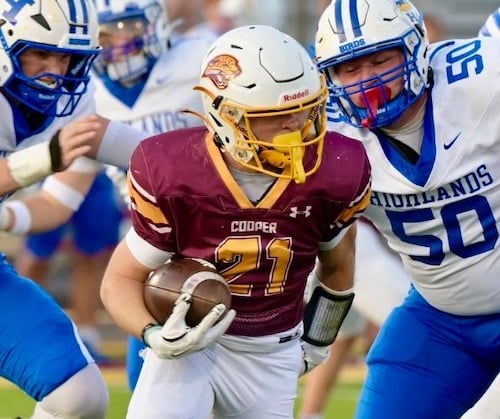By Dr. Raymond Hebert
Thomas More University
Part 37 of our series, “Retrospect and Vista II”: Thomas More College/University 1971-2021”
During the final years on the Covington campus (VMC) and the early 1970s on the Crestview Hills campus, the biology department was one of the strongest at Thomas More College. In fact, it still remains so today. For example, in 1969 there were 123 majors, making biology the fourth-largest of twenty departments on campus.
Another important statistic showed that between 1963 and 1969, the average percentile for the GRE’s content exam in biology, taken by biology majors, was 65% nationally, with 38% of those majors being in the upper 25%.
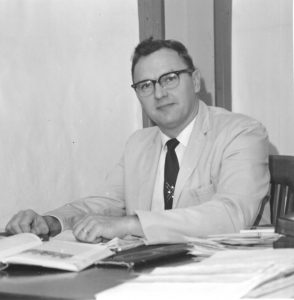
Moreover, in the 1960s, just under 50% of the biology majors pursued advanced studies (Biology Annual Report for 1969, TMU Archives).
One of the Biology Department’s leaders during those years was Sister M. Laurence Budde, SND, showcased in a prior article. (SEE: http://nkytribune.com/2021/10/our-rich-history-tmu-legend-st-mary-laurence-budde-helped-make-biology-depart-a-shining-star/). She was especially important because of her work in obtaining and maintaining the college’s biology field station on the Ohio River. This article focuses on three other professors in the biology department, who also played major roles in educating scores of students: Dr. Wallace “Fred” Humphreys; William Volker; and Dr. William Bryant.
Dr. Wallace “Fred” Humphreys graduated from Villa Madonna College (VMC) in 1949 and then completed both an MS (1952) and a PhD (1955) from the U. of Institutum Divi Thomae in Cincinnati before returning to teach at VMC. Having earned undergraduate degrees in biology and chemistry at Villa Madonna College, it is not surprising that his graduate degrees were in Biochemistry from the St. Thomas Institute. Over time, Fred worked with all of the pre-medical and pre-dental students and also handled the co-op students and the MCAT (Medical College Admission Test) preparation details, including the collection of the letters of recommendation for medical school applications and graduate study. Humphreys taught at Villa Madonna/Thomas More College from 1952 until his retirement in 2000, teaching full time. He also served as department head on two occasions and was the faculty representative on the board of trustees from 1972–1978. His other professional activities included working as a part-time faculty member at St. Pius X Seminary and as part-time Assistant Director of Medical Laboratory Testing at Hamagami Clinical Laboratory in Kenwood (Dr. Wallace Humphrey File, TMU Archives.)
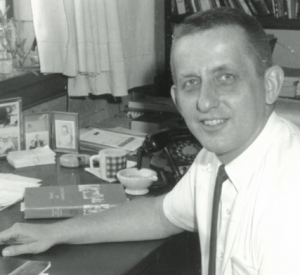
A close look at Professor Humphreys’ file shows that he was consistently evaluated well by the students and his peers. The academic dean’s evaluation for 1985, for example, states of him: “The time and effort that Dr. Wallace F. Humphreys gives to the Biology program and Thomas More College is enormous. He is a quiet person but one who makes major contributions. He is a true professional. He is a fine person in addition to being an outstanding teacher” (Academic Dean’s Annual Evaluation for 1985, TMU Archives). Fred was honored in 1974 as the Outstanding Full-Time Professor of the year for the 1973–1974 academic year.
On August 28, 2011, soon after his death, Dr. W. Frederick (Jack) Humphreys was honored at a “Memorial Mass Celebration” in the Connor Convocation Center on campus. It was shared with those present on that occasion, that Dr. Humphreys’ mottoes were: “Capitalize on adversity” and “When all else fails, improvise.” On the occasion of that “Memorial Mass Celebration,” I was given the honor and privilege of delivering the eulogy on behalf of Dr. Fred Humphreys. I began by saying that “in all many 37 years at Thomas More College, there are few individuals who have influenced me more or that I have respected more than Fred Humpherys.” Later, in my conclusion, I added:
In closing, what I remember most about Fred Humpherys the man was his kind quiet spirit that took a few minutes out of his day in the early 70s to counsel a young history faculty member. He would stop and inquire if I needed any help and his advice always showed reflection, sensitivity, and a special care for the feelings of others. He never gossiped and was always positive, a trait much admired by administrators for his direct and positive attitude. As a Dean, there were many faculty who viewed me differently; because of title and position they saw a barrier rather than a bridge, even though I had been one of them. Fred, by contrast, was always consistently the same; never saying no when asked for his thoughts because of his many years of perspective or because of his deep commitment to the future of Thomas More College. As should be obvious by now, and I could go on and on, I consider Wallace, “Jack”, “Fred” Humphreys to have been one of the finest gentlemen I have ever known. It is an honor to have been his colleague and friend. Thomas More College has lost one of its “true giants” but his legacy will never be forgotten. (“A Memorial Mass Celebration” for Dr. W. Frederick (Jack) Humphreys – Eulogy by Dr. Raymond Hebert – TMU Archives)
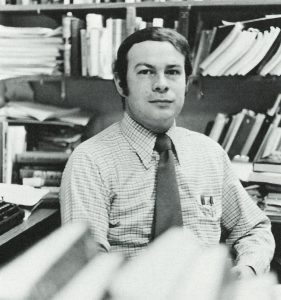
A third member of that powerful team of scientists (along with Sr. M. Laurence and Dr. Humphreys) in the biology department was William Volker, who had received both his BS and MS from the University of Cincinnati College of Pharmacy. Bill replaced Fred as the department head in 1968 and remained as chair during those crucial early years at the new Thomas More College campus. It was just before that, in 1967, that the college acquired the ownership of the former U.S. Lock and Dam No. 35 on the Ohio River, in Campbell County. Initially, at this site some nineteen miles east of Cincinnati on the Kentucky side of the Ohio River (KY Route 8), the Biology Field Station provided hands-on opportunities for faculty and students to combine fieldwork with laboratory experience and library research. The opportunity to ecologically survey the river and its environments became an invaluable asset for Thomas More students and faculty.
While Sister Mary Laurence Budde was the primary liaison for the field station during the early years, Bill Volker was the department chair in the spring of 1971 when “the TMC biology department received a grant of $8,000 from the Cincinnati Gas and Electric Company to execute various studies on the microbial forms and physical factors of the Ohio River at and near the station.” That relationship remained in place for many years and to this day, with Dr. Chris Lorentz as the current director, the Thomas More University Biology Field Station is one of the finest of its kind in the entire United States. As a prophecy, Sister Irmina Selinger, OSB, had said in 1971 in her Retrospect and Vista: VMV/TMC 1921-1971 that “the future holds many possibilities for the advancement of science through the use of the biological station” (TMU Archives; Retrospect and Vista, p. 75).
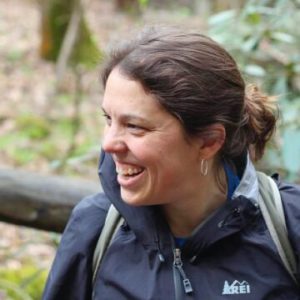
Meanwhile, Bill Volker, whose fields were Pharmacology and Aquatic Microbiology, guided the department as chair through the late 1960s and 1970s, especially with grant writing through the National Science Foundation (NSF). He also attended research conferences at Ohio State University (1960), Indiana University (1965), the Argonne Labs (1969) and was respected enough among his peers to be nominated for the academic dean position in 1972, which he politely declined.
Finally, the fourth and youngest of that superstar team of faculty in this stronghold of academic departments was Dr. William “Bill” Bryant. Bill, whose MS and PhD (Botany and Ecology) were earned at Southern Illinois University, originally taught there as a Lecturer and later for one year at Kentucky State University before being hired by Bill Volker as the number of biology majors kept growing. Dr. Bryant’s specialties were: Ecology of Natural Areas, Wildlife Management, Population Dynamics, Land Use Practices and Plant Taxonomy. It did not take long for Dr. Bryant to become a “rising star” at Thomas More. He was a well-respected scholar who soon built a reputation across the state as a botanist and forest ecologist. He taught a wide variety of courses (far more than most) including Ecology, Biology, Invertebrate Biology, and Aquatic Biology. In addition, having attended History of Kentucky classes at the University of Kentucky taught by the legendary historian Dr. Thomas Clark, he developed a love for the state’s heritage. His knowledge was so extensive that, for as long as he was allowed, he even taught a very popular History of Kentucky class for the Thomas More history department, and taught it brilliantly.
On September 8, 2019, after his death, the First Christian Church in his native Lawrenceburg, Kentucky, held a “Service of Remembrance and Celebration for the Life of Dr. William S. ‘Bill’ Bryant.” A former student and colleague and current chair of the biology department, Dr. Shannon Galbraith-Kent, with former colleague Dr. John Ferner (and wife Jodi), wrote a touching memorial that included quotes from alums and some of Dr. Bryant’s own words. While describing Bill as “Teacher, Advisor, Father-figure, Friend, Mentor, and Advocate,” the remembrance focused heavily on his “love for his students,” his “love of nature” and his “love of his colleagues” (Shannon Galbraith-Kent Reminiscences, September 8, 2019).
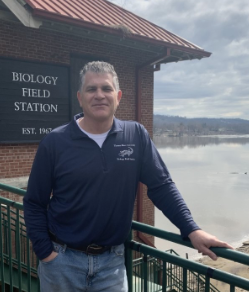
Most meaningful were Bill’s own words shared by Dr. Galbraith-Kent. In the late 1970s, Dr. Bryant was asked to define “loving” for a Thomas More alumni publication. He wrote: “Loving is opening yourself up and letting your heart say ‘hello’ to the world! Loving is the art of giving and receiving love. It’s a caring; a sharing; a believing; and an attempt at understanding. It isn’t always easy. It’s accepting others – warts and all. Loving is thinking kind thoughts, sharing tender moments, and remembering good times; it’s thinking of others and not always of ourselves. Loving is what makes us whole.” After Dr. Bryant passed away, his wife Barb found a small piece of paper that he had kept neatly folded into a square in his wallet written around the time he had retired.
Here are the words he wrote:
When I came to TMC in Fall 1971, I didn’t know how long I’d stay. 37 years later, I was still here. Why? Did I influence others or did others influence me? My colleagues, Dr. Humphreys, Sr. Mary Laurence, Mr. Bill Volker, Dr. John Ferner, Dr. Siobhan Barone, Dr. Chris Lorentz, Dr. John Hageman, and many others showed me the consistent department-wide traits, dedication, and love for students. My students probably influenced me more than I did them; I watched them grow, achieve goals, succeed, and fail. I remember them and I am most pleased that they remember me in kind ways. I tried to set a good example. Others had influenced me (Special thanks to Shannon Galbraith-Kent for her reminiscences, September 8, 2019).
Dr. Raymond G. Hebert is a Professor of History and Executive Director of the William T. Robinson III Institute for Religious Liberty at Thomas More University. He has just completed his 46th year at Thomas More and, with that background, will now serve as the General Editor of the official history of Thomas More College/University from 1971-2021. With a projected title of RETROSPECT AND VISTA II, it will serve as the sequel to Sr. Irmina Saelinger’s RETROSPECT AND VISTA, the history of the first 50 years of Thomas More College (formerly Villa Madonna College). He can be contacted at hebertr@thomasmore.edu.
We want to learn more about the history of your business, church, school, or organization in our region (Cincinnati, Northern Kentucky, and along the Ohio River). If you would like to share your rich history with others, please contact the editor of “Our Rich History,” Paul A. Tenkotte, at tenkottep@nku.edu. Paul A. Tenkotte, PhD is Professor of History and Gender Studies at Northern Kentucky University (NKU) and the author of many books and articles.















